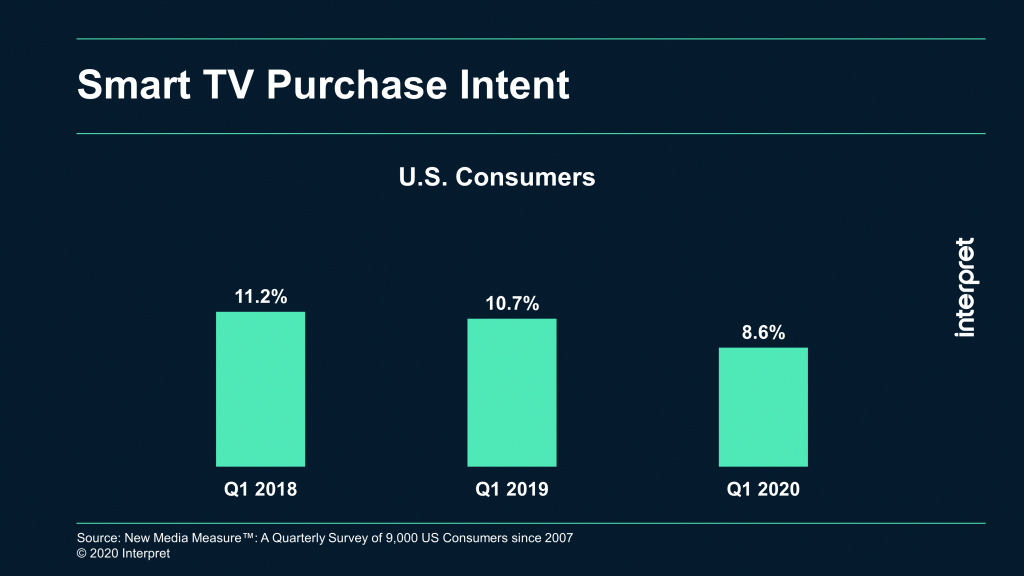Consumer electronics firms like LG, Samsung, Sony, TCL, and Vizio all launched new TV models in 2020, and it’s likely that most of these companies enjoyed an uptick in sales thanks to more people staying at home and either upgrading or adding additional TV sets for other areas of their home. Year-over-year from Q1 2019 to Q1 2020, Interpret’s New Media Measure® indicates that overall sales of Smart TVs increased 5%-points, with 53% of US households now owning a Smart TV. LG, one of the more popular brands among gamers and videophiles, recently reported that its premium sets have enjoyed double-digit growth since mid-March.
As reported by USA Today, point-of-sale tracker The NPD Group found that big-screen TVs, 65-inch and larger, were especially popular, climbing more than 50%. Interestingly, the spike in TV sales may not just be tied to entertainment – some consumers are purchasing new sets for business communication purposes, according to Tom Campbell, chief technologist for Video & Audio Center stores in Los Angeles, who told USA Today that the television is no longer just for binging Netflix but is becoming an “essential communication device.”
The surge in purchases isn’t expected to last, however. After all, if you bought a new TV in the beginning of the year, are you going to buy another just months later? In fact, the Consumer Technology Association’s latest forecast is for TV sales revenue of $21 billion in 2020, which would represent a 14% decline from 2019. This squares with Interpret’s data pointing to Smart TV purchase intent dropping from almost 11% in Q1 2019 to 8.6% in Q1 2020.
“Purchase intent has been decreasing steadily as many households have already fulfilled their TV upgrade needs. I’m not surprised that we’re approaching a saturation point, as purchase intent declines tend to kick in once a product crosses 50% penetration of households,” observed Harry Wang, Senior Vice President, Interpret.






